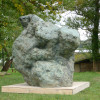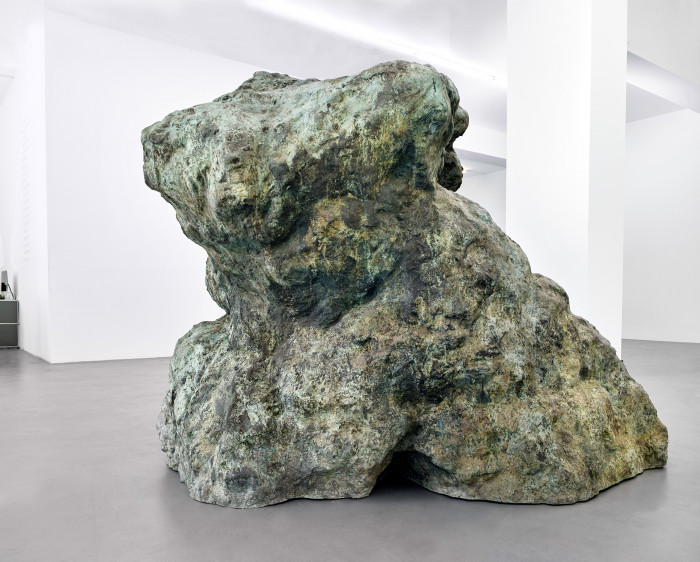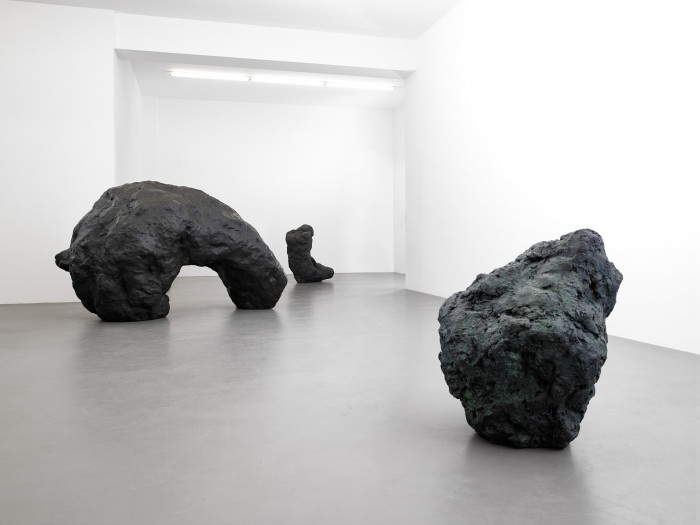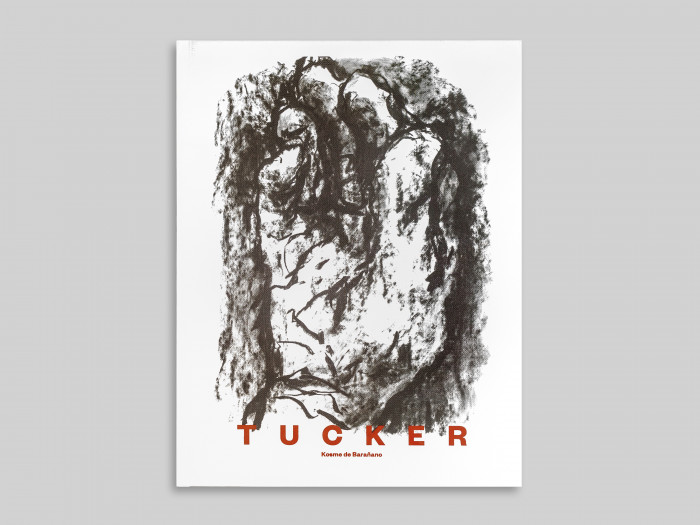
William Tucker Skulptur
The Buchmann Gallery is delighted to announce the second solo show of works by the British/American sculptor William Tucker (*1935 in Cairo, lives in Williamsburg, MA).
In the 1970s, Tucker belonged to the highly influential circle of English sculptors that included Philip King and Tim Scott, who were presented as the ‘New Generation’ in the eponymous exhibition at London’s Whitechapel Art Gallery in 1965. This group had a decisive impact on the development of abstract sculpture and was largely instrumental in broadening the concept of sculpture. In 1966, William Tucker was invited to take part in the seminal exhibition Primary Structures at the Jewish Museum in New York, a decisive moment in American Minimal Art. During this period he also made a name for himself as a theoretician, critic and curator. In 1972, Tucker published The Language of Sculpture as well as reviews and essays in Studio International, the British counterpart of ARTFORUM. In 1975, he organised The Condition of Sculpture show at the Hayward Gallery in London.
William Tucker’s current work, which is being presented in this solo show, references the human body. Against the background of his earlier work this may seem surprising. However, Tucker approaches the line between figuration and abstraction very openly and does not view it as a contradiction. The reference is fluid, changing, but it does always come back to the human figure. “Any sculpture is a figure in a sense, if it reads as a total, a unity.” (William Tucker, First Magazine, 1961)
Despite their figurative reference, the shape of the sculptures cannot immediately be deciphered and named. They do not depict a simple, clearly readable human shape or gesture. Instead, the sculptures open up a wide field of potential associations, which gives them their insistent and unique physical corporeality. William Tucker’s sculptures have a presence that puts our own body in relation to them and thus heightens our awareness of it.
His engagement with the nature, structure and mass of the human body led Tucker to create a series of sculptures, for example Xanthe (1992) and Oedipus III (2014), which are determined more by their abstract shape than their immediately apparent form.
The imposing sculpture Frenhofer (1995) is one of the artist’s largest torsos. Other pieces from this body of work are Pamona in the Tate London collection, Demeter in the collection of the Museum of Modern Art New York, and Eve in the Skulpturenpark Waldfrieden Wuppertal.
Originally modelled in plaster, Tucker cast his piece Tauromachy (2008) in bronze for the first time for this show. Tauromachy started as a fist, but it suggests a charging bull as in Goya’s Tauromachy etchings. The immediate physical presence of the sculpture also gives it a tangible muscular strength.
Oedipus III (2014) sees William Tucker taking a new approach to surfaces: this piece is finished in an unusually intense red colour.
“Tucker’s sculpture asks fundamental questions as to what sculpture is and what it can be.” (Joy Sleeman, The Sculpture of William Tucker, Lund Humphries, The Henry Moore Foundation, 2007)
Sculptures by William Tucker can be seen in several collections, including the Tate Gallery in London, the Guggenheim Museum, the Museum of Modern Art New York, the Metropolitan Museum New York, the Nasher Sculpture Center Dallas and the Art Gallery of New South Wales in Sydney.
The Museo de Bellas Artes in Bilbao will be presenting a major show of William Tucker’s work from 9 June until 14 September 2015.
For additional information on the artist or for visual materials on the works in the exhibition, please do not hesitate to contact the gallery at any time.

William Tucker
Born 1935 in Cairo, Egypt
Lives and works in Massachusetts, USA
| 1959-1960 | Studies at St. Martin’s College of Art and Design, London |
| 1955-1958 | Studies at University of Oxford, England |
| 2011 | Elected as honorary National Academician, National Academy Museum, New York |
| 2010 | Lifetime Achievement Award, International Sculpture Center, Hamilton |
| 2009 | Jack Goldhill Award for Sculpture, Royal Academy of Arts, London |
| 1995 | Rodin-Moore Memorial Prize, Second Fujisankei Biennale Hakone Open-Air Museum, Japan |
| 1991 | Sculpture Center Award for Distinction in Sculpture |
| 1980 | Guggenheim Fellowship |
|
1968-1970 |
Gregory Fellowship in Sculpture, University of Leeds |
Aberdeen Art Gallery, Scotland
Arkansas Art Center, Little Rock, AK
Art Gallery of New South Wales, Sydney, Australia
Arts Council of Great Britain, London
British Council, London
The British Museum, London
City of Bilbao, Spain
Contemporary Art Society, London
Florida International University, Miami, FL
Solomon R. Guggenheim Museum, New York
The Hakone Open-Air Museum, Tokyo, Japan
High Museum of Art, Atlanta, GA
Hirshhorn Museum and Sculpture Garden, Washington, D.C.
Kröller-Müller, Otterlo, The Netherlands
Louisiana Museum of Modern Art, Humlebæk, Denmark
The Margulies Collection, Miami
The Metropolitan Museum of Art, New York
The Museum of Fine Arts, Houston
The Museum of Modern Art, New York
National Gallery of Victoria, Melbourne, Australia
Rijksmuseum, Amsterdam, The Netherlands
Storm King Art Center, Mountainville, NY
Peter Stuyvesant Foundation, Newcastle-upon-Tyne, England
Tate Gallery, London
Victoria and Albert Museum, London
Walker Art Center, Minneapolis, MN































